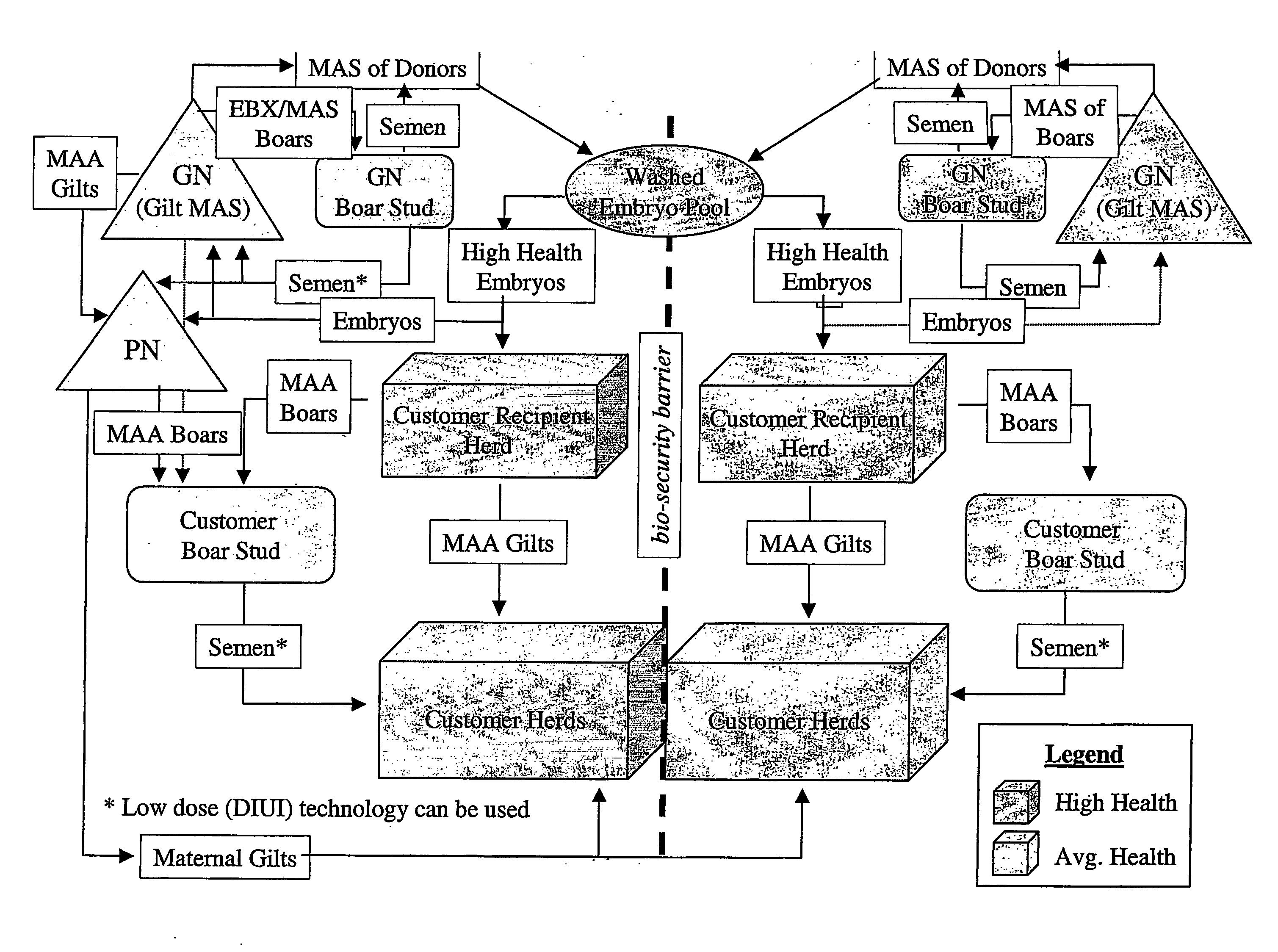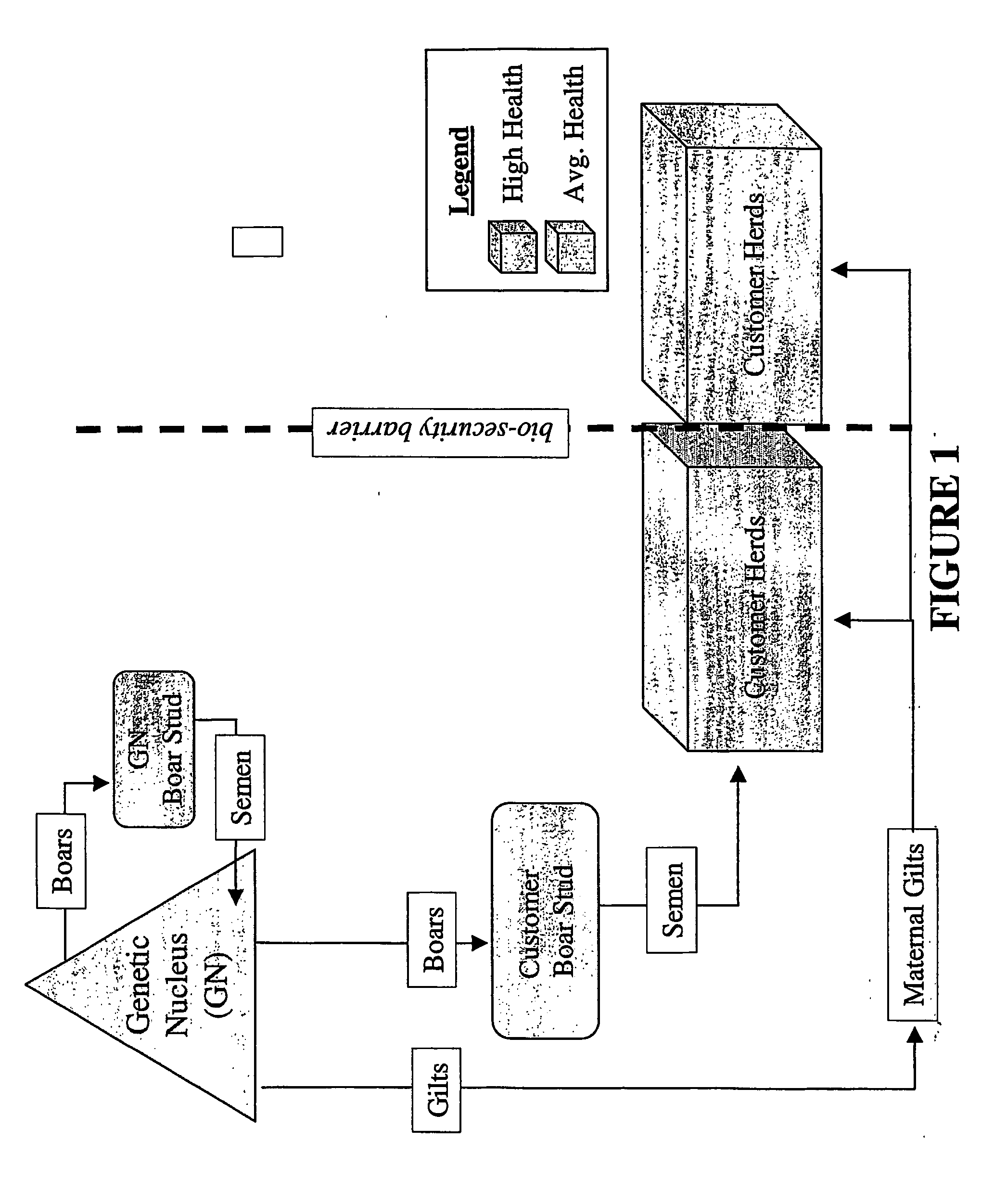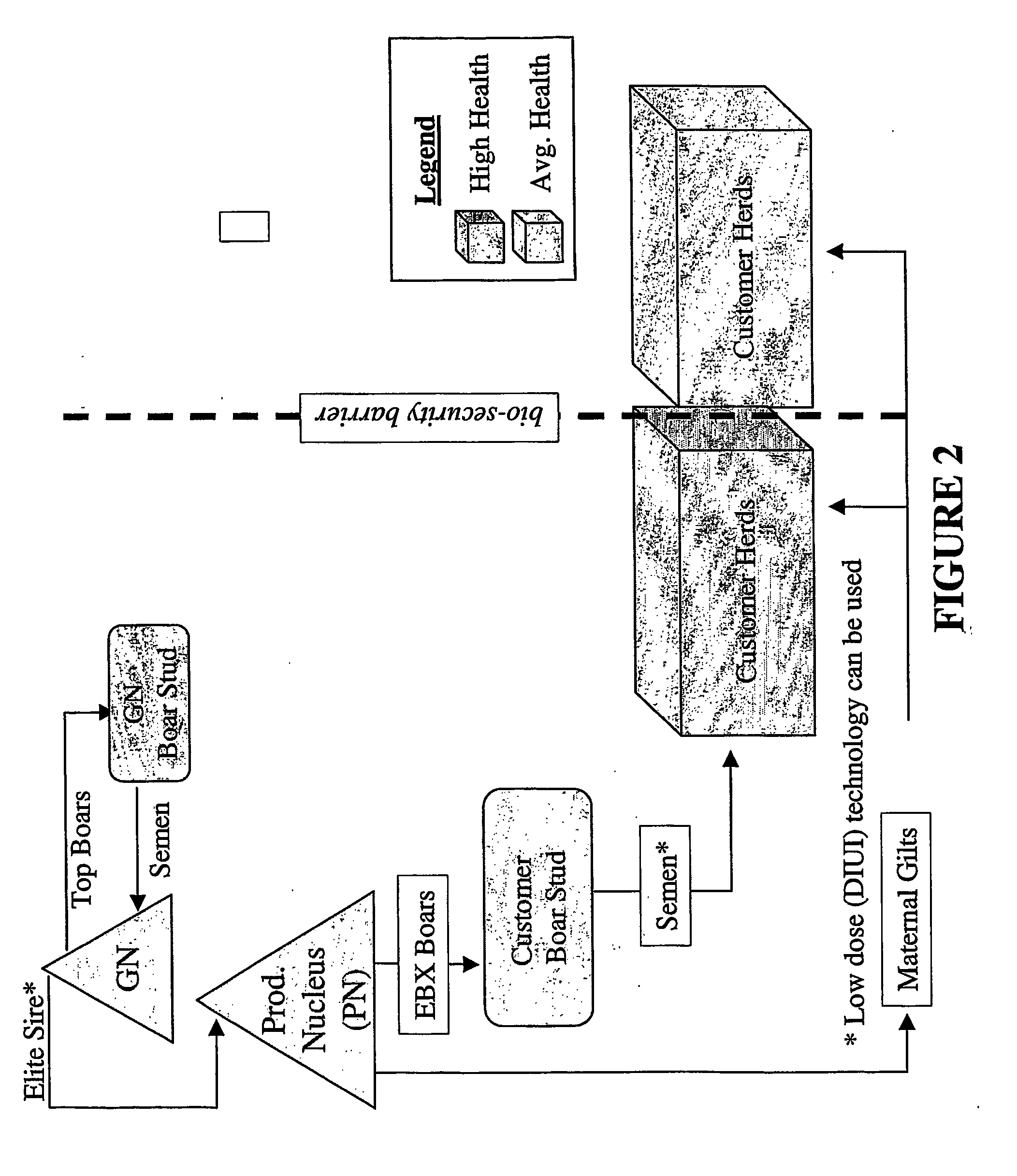Method for Genetic Improvement of Terminal Boars
a terminal boar and genetic improvement technology, applied in the field of improving porcine (pig) genetics, can solve the problems of genetic lag, inferior terminal boars, genetic variability among, etc., and achieve the effect of maximizing the rate of genetic progress
- Summary
- Abstract
- Description
- Claims
- Application Information
AI Technical Summary
Benefits of technology
Problems solved by technology
Method used
Image
Examples
example 1
Fixing of Desired FUT1 Allele in a Herd Population
[0176]The first example illustrates the power of the instant invention for changing gene frequency in a population can be shown using the FUT1 gene. The FUT1 (alpha (1,2) fucosyltransferase 1) gene controls resistance and susceptibility to E. coli F18 adhesion to the mucosa of the small intestine. There are two forms (alleles) of the gene. The dominate allele (symbolized by “S”) codes for fimbrial receptors for the E. coli F18 fimbria, resulting in proliferation of that particular strain of E. coli in the small intestine of the pig and creating disease characterized by severe diarrhea and edema (Vogeli et al., 1999). The recessive allele (symbolized by “r”) codes for the absence of such fimbrial receptors, thereby conferring resistance to the E. coli F18 as well as to clinical signs of disease caused by the bacteria. In terms previously described, the “desired trait” is improved health or absence of disease and “improved germplasm” i...
example 2
Improvement of Body Weight at 196 Days of Age
[0179]The second example illustrates the use of the instant invention for improving body weight at 196 days of age (BWT196), an efficient growth trait. This is a quantitative trait that reflects an animal's potential for growth rate (increased body weight per unit of time). It is a phenotypic trait that can be measured on each animal in the population and the resulting data approximates a normal, bell-shaped curve. Trait expression (i.e. phenotypic value) is the result of a combination of both genetic and environmental effects. Genetic control of the trait is not completely known, but it is assumed that many genes with effects of varying sizes interact both additively and non-additively to create the cumulative genetic effect.
[0180]Two methods previously described that are used to estimate an animal's genetic potential to pass on improved phenotype to its progeny are BLUP and MA-BLUP. These methods use phenotypic data (e.g. BWT196) and pe...
example 3
Modulation of MC4R to Improve Feeding Behavior and Body Weight
[0183]Similar to Example 1, selection of animals can be enhanced by the inclusion, during the execution of the described methods, of data pertaining to candidate genes that have been verified to have a proven effect in the population being selected. Such a gene is the porcine melanocortin-4 receptor (MC4R). Mutations in the MC4R gene have been implicated in the regulation of feeding behavior and body weight in humans and mice. Moreover, missense variants in this gene have been shown to have significant associations with backfat thickness and growth rate in several lines of pigs (see Kim et al., 2000). In the Kim et al. studies, the “11” genotype was found to result in 9% less backfat than the “22” genotype, whereas pigs with the “22” genotype grew significantly faster (˜37 g / day faster) than the pigs with the “11” genotype. These results appear to be a function of appetite because the “22” genotype consumed an average of ...
PUM
| Property | Measurement | Unit |
|---|---|---|
| Time | aaaaa | aaaaa |
| Time | aaaaa | aaaaa |
| Weight | aaaaa | aaaaa |
Abstract
Description
Claims
Application Information
 Login to View More
Login to View More - R&D
- Intellectual Property
- Life Sciences
- Materials
- Tech Scout
- Unparalleled Data Quality
- Higher Quality Content
- 60% Fewer Hallucinations
Browse by: Latest US Patents, China's latest patents, Technical Efficacy Thesaurus, Application Domain, Technology Topic, Popular Technical Reports.
© 2025 PatSnap. All rights reserved.Legal|Privacy policy|Modern Slavery Act Transparency Statement|Sitemap|About US| Contact US: help@patsnap.com



